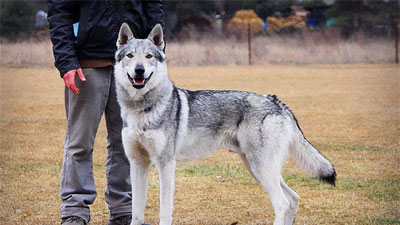- Size
- Smallest
- Small
- Small to Medium
- Medium
- Large
- Giant
- Characteristics
- Smartest
- Hypoallergenic
- Fluffy
- Best Guard
- Best Family
- Best for Kids
- Low Shedding
- Healthiest
- Police Dogs
- Most Calm
- Quietest
- Color
- White
- Black
- Grey
- Brown
- Blue
- Red
- Coat
- Hairless
- Short
- Long
- Origin
- Japan
- China
- Australia
- Germany
- Italy
- United States
- France
- Group
- Hound
- Terrier
- Herding
- Toy
- Working
- Sporting
What Does It Mean When A Dog Bares Its Teeth?

Photo by Fox on Unsplash
Dogs, our loyal companions, communicate with us not only through barks and tail wags but also through a rich tapestry of body language. One of the most striking and often misunderstood expressions is bared teeth. While it might seem straightforward, the message behind a dog baring its teeth is nuanced and can vary based on context, emotions, and the individual dog's personality. In this comprehensive exploration, we delve into the intricacies of dog body language, specifically focusing on the meaning of bared teeth.
Definition of Bared Teeth in Dogs
Before we dive into the complexities of bared teeth, let's establish a clear definition. Bared teeth in dogs refer to the action of a dog curling its lips back to reveal its teeth. This can happen for various reasons and is a crucial aspect of canine communication. Understanding the nuances of this behavior is essential for dog owners to interpret their pets' emotions accurately.
The Message Behind Bared Teeth
When a dog bares its teeth, it is a form of canine communication, conveying a specific message to those in its vicinity. The primary message associated with bared teeth is a warning. It serves as a visual cue to communicate that the dog feels threatened, uncomfortable, or stressed, and it is expressing a desire for the perceived threat to back off.
Unraveling the Motivation Behind Bared Teeth
To truly comprehend a dog's message when baring its teeth, one must consider the context in which the behavior occurs. Dogs may bare their teeth for various reasons, and each situation demands a nuanced interpretation. Some common contexts include:
1. Aggression: Bared teeth are often associated with aggressive behavior. When a dog feels cornered, scared, or provoked, it may resort to baring its teeth as a warning before escalating to more severe actions.
2. Fear or Anxiety: Dogs may also bare their teeth when experiencing fear or anxiety. In these situations, the intent is not necessarily aggression but rather a display of discomfort and an attempt to establish a safe distance from perceived threats.
3. Pain or Discomfort: Physical pain or discomfort can elicit bared teeth as a defensive mechanism. Dogs may use this display to communicate that they are in distress and should be approached with caution.
4. Resource Guarding: Bared teeth can be a manifestation of resource guarding, where a dog protects its possessions, such as food, toys, or territory. This behavior communicates a clear message: "This is mine, and I'm willing to defend it."
5. Playful Grin or Submissive Smile: Interestingly, not all instances of bared teeth convey aggression. Some dogs exhibit a playful grin or a submissive smile, often accompanied by a relaxed body posture, averted gaze, and other signs of non-threatening behavior. In these cases, the bared teeth are a part of social interaction rather than a warning.
Understanding the specific context is crucial for accurately interpreting a dog's bared teeth and responding appropriately.
Accompanying Signs of Aggression
To gauge the seriousness of a dog baring its teeth, it's essential to consider accompanying signs of aggression. These may include:
Growling and Snarling: Bared teeth are frequently accompanied by growling or snarling, indicating an elevated level of threat and an intention to escalate to more assertive actions.
Erect Ears: Aggressive posturing often includes ears standing erect, alert and focused on the perceived threat.
Rigid Body Posture: An aggressive dog typically displays a rigid body posture, emphasizing its readiness to defend itself or its territory.
High, Rapid Tail Movement: A tail held high and moving rapidly can signify heightened arousal and a potential escalation to aggressive behavior.
Recognizing these additional cues is vital for dog owners and those interacting with dogs to determine the appropriate course of action.
Distinguishing Between Aggression and Playful Behavior
While bared teeth can be a sign of aggression, it's crucial to differentiate between aggressive behavior and more benign expressions. Playful behavior may involve bared teeth without the accompanying signs of aggression. In play, a dog might exhibit a loose, wagging tail, a relaxed body, and a generally happy demeanor.
Responding to Bared Teeth
Understanding the context and the dog's overall body language is the key to responding appropriately when faced with bared teeth. Here are some general guidelines:
Back Off and Give Space: If a dog is baring its teeth as a warning, the best course of action is to back away slowly and give the dog space. Avoid direct eye contact, as this can be perceived as a challenge.
Do Not Approach Aggressive Dogs: In situations where bared teeth are accompanied by aggressive behavior, it is crucial not to approach the dog. Seek professional help if dealing with a dog displaying consistent aggression.
Seek Professional Guidance: If you are unsure about a dog's behavior or if you are dealing with persistent issues, consult with a professional dog trainer or behaviorist. They can provide expert insights and guidance tailored to your specific situation.
Positive Reinforcement for Desirable Behavior: If a dog bares its teeth as part of a playful or submissive display, consider offering positive reinforcement when the behavior is appropriate. This helps reinforce desirable conduct.
Submissive Grin or Playful Smile
It's essential to recognize that not all instances of bared teeth indicate aggression. Some dogs exhibit a submissive grin or a playful smile, especially during interactions with their owners or other dogs. Signs of a submissive grin include a relaxed body posture, averted gaze, and ears sitting flatter against the head. In these cases, the bared teeth are a friendly gesture, and the dog is not expressing a threat.
Conclusion
In the intricate world of dog body language, bared teeth stand as a multifaceted expression that requires careful interpretation. Whether conveying a warning, expressing fear, playfulness, or submission, the context and accompanying cues play pivotal roles in understanding a dog's true message. As responsible dog owners and enthusiasts, it is our duty to educate ourselves on these nuances, fostering a deeper connection with our canine companions. By recognizing and respecting the language of bared teeth, we can navigate the spectrum of canine expressions, creating harmonious interactions based on understanding and mutual respect.
You May Also Like
 Dog Training TipsHow To Train Your Dog To Eye Contact
Dog Training TipsHow To Train Your Dog To Eye Contact Help & AdviceWhy Won't My Dog Learn To "Stand" Command?
Help & AdviceWhy Won't My Dog Learn To "Stand" Command? Dog Training TipsThe 'Stand' Command: A Crucial Yet Overlooked Training Cue
Dog Training TipsThe 'Stand' Command: A Crucial Yet Overlooked Training Cue Dog Training TipsThe Place Command: Teach Your Dog to Go to Their Place
Dog Training TipsThe Place Command: Teach Your Dog to Go to Their Place Dog Training TipsDog Tricks: Teach Your Dog to High Five
Dog Training TipsDog Tricks: Teach Your Dog to High Five Dog Training TipsTrain Your Dog to Play Dead: A Step-by-Step Guide
Dog Training TipsTrain Your Dog to Play Dead: A Step-by-Step Guide